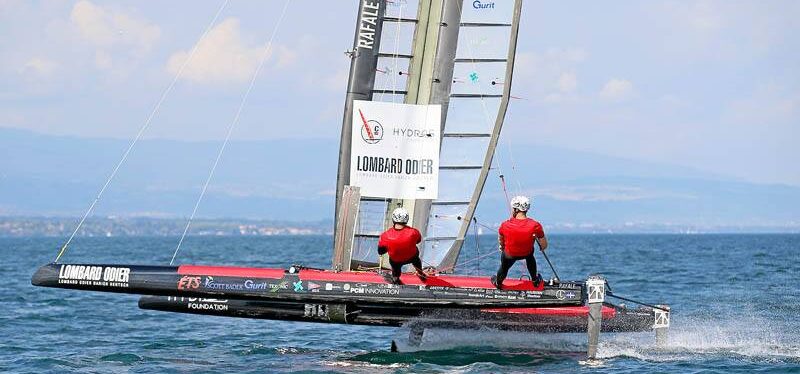Origins
The origins of the Foiling SuMoth Challenge date back to September 2015 when Bruno Giuntoli, founder of the challenge and the SuMoth Association finished the CClass campaign of “Rafale C”, the first and only student-designed and manufactured CClass rigid-wing foiling catamaran.

Rafale C was made by the student driven team, Rafale ETS (Montreal, CANADA) to compete at the now extinct Little Cup and formerly known as “Little Americas Cup”. This competition was, for many decades, the place where the America’s Cup teams and other professionals would do applied R&D at small scale, making the CClass the most technologically oriented open class. The cup, held every 3 to 4 years, was the place where top designers like Martin Fisher, Tom Speer and Steve Clark would meet to measure their concepts, innovations and to discuss ideas.
The team designing Rafale C was made almost entirely by students, volunteers and professors supporting the development of the team adventure of facing professional entities and boatyards like Hydros (SWITZERLAND) and their vast experience with the Hydroptere and Groupama Team (FRANCE) with Franck Cammas preparing for the 2017 America’s Cup.
The Geneva Little Cup experience was for Bruno an eye opener to try to tackle many elements in one single competition. Starting with the sustainability aspect of the composite industry.
As most high-end prototypes, these carbon-fibre composite machines, capable of reaching 3 times the wind speed at 35 knots top speed, lack any sustainability approach when it comes to design and manufacturing.
From the material choice to the methodology, the composite materials industry has a strong CO2 footprint, from consumables and off-cuts to single use prototype moulds and failed parts.
When it comes to a regatta or any racing competition, the results that matter are those on the water. For an open-design class like the CClass, much of those results are purely related to the designers and manufacturer of the boats who do huge effort to bring together a fast machine while respecting the rules and have no opportunity to directly present and discuss these concepts, ideas and hypothesis to their peers as it happens within the Scientific Community.
These elements and the Little Cup experience was for Bruno an eye opener for developing a multi-stage student competition where the teams could measure not only their on-water performance (Stage S3) but also their design (Stage S1) and manufacturing (Stage S2) approaches while developing new and sustainable-oriented ideas and methods for a better future.
